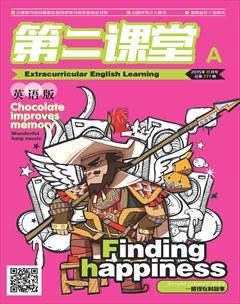Chocolate improves memory
谢细群
Dr. Scott Small, Director of the Alzheimers(老年痴呆症) Disease Research Center at Columbia University, is a professor at Columbia University in New York City. He is the lead writer of a research paper describing the effects of cocoa flavanols (黄烷醇) on brain activity.
The study involved 37 volunteers aged between 50 and 69. Researchers gave them a high-level flavanol drink made from cocoa beans or a low-level flavanol drink. For a period of three months, some subjects got 900 milligrams of flavanol a day. The others got 10 milligrams of flavanol each day.
Brain imaging and memory tests were given to each study subject before and after the study. Dr. Small says that the subjects who had the high-level flavanol drink showed much improvement on memory tests.
The researchers warn that more work is needed because this study was performed on a small group. Researchers at Brigham and Womens Hospital in Boston, Massachusetts recently announced plans to do just that.
The study subjects will be divided into two groups and will take two pills a day. The capsules(膠囊) will all look the same. But, one groups capsules will contain flavanols. The other group will not.
Dr. Manson says that a person would have to eat ten times a normal amount to get the flavanols in just one flavanol pill.
But Dr. Small says people should not necessarily start eating more chocolate. He says a person would have to eat a huge amount of chocolate to get the level of flavanol given to the test subjects. He also says many manufacturers remove the flavanols from their chocolate products.
Two heads are better than one ... especially when they are made of chocolate! These sculptures (雕塑) were part of the 2014 Brussels Chocolate Festival, not the study. But they are very cool!
Dr. Small says a cocoa-based flavanol extract (提炼物) may be developed in the future. He says that more studies are needed to see how much flavanol is good for human health.
Questions:
1. What can chocolate do ?
2. How old are the volunteers?
3. How will another study be carried out?
4. “But they are very cool!” Who are “they” ?

